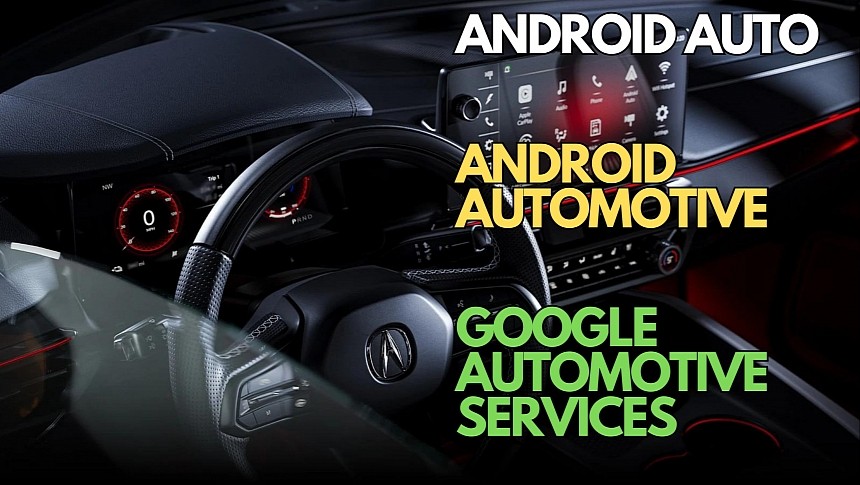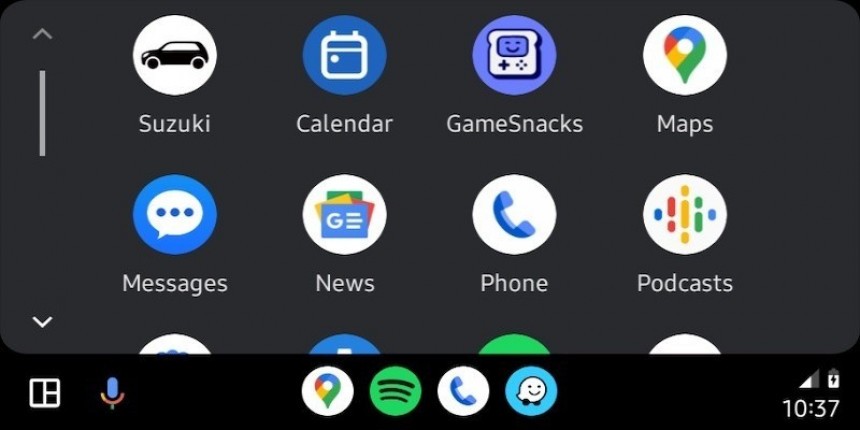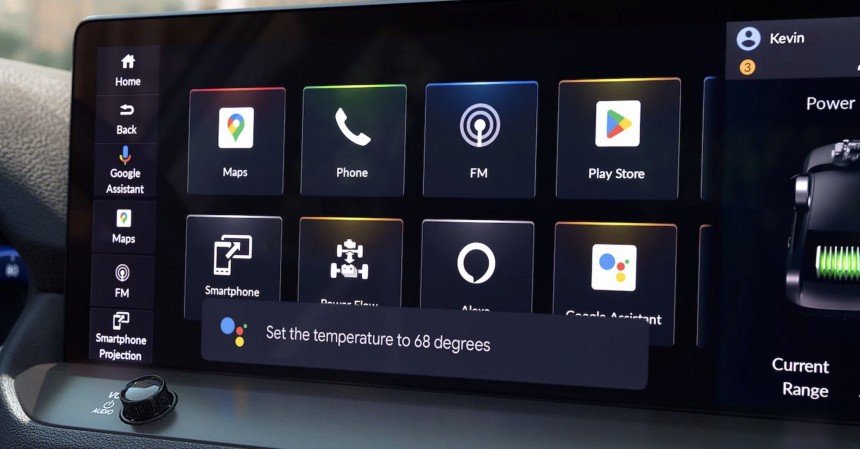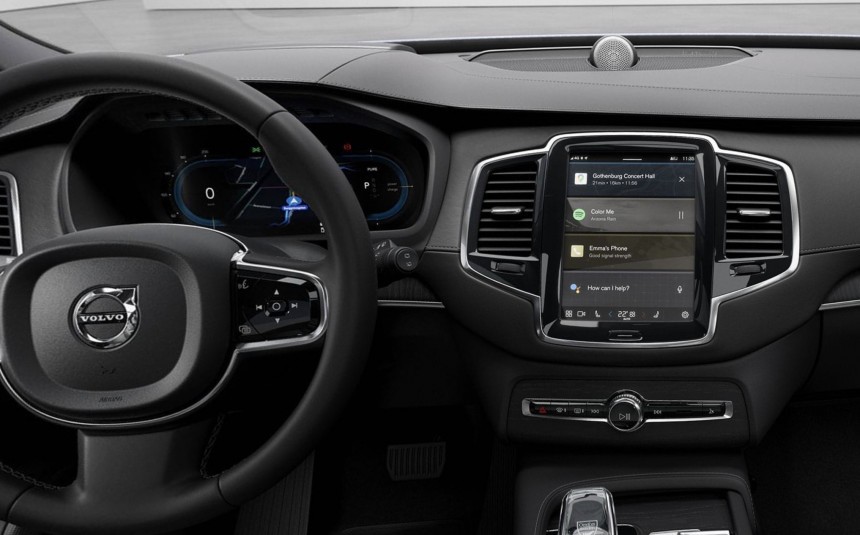Apple is building a car from scratch, Huawei is working with traditional carmakers to supply the necessary software for new-generation capabilities, and Samsung is investing billions of dollars in chips for autonomous vehicles.
Tech giants are slowly but surely expanding in the automotive space, and while all these companies are going for a different space, what's Google doing on this front?
The Mountain View-based search giant isn't working on a car, so it's not building an Apple Car rival. It tries to become a top player in the automotive business by offering three main components: Android Auto, Android Automotive, and Google Automotive Service.
The lineup might seem confusing for users, but more importantly, it could make it hard for new-car buyers to make a pick whenever they have to choose the software available in their next vehicle. Today's article aims to highlight the differences between these two products, explain how each works, and help readers make an informed vehicle toward a new purchase.
Android Auto is the oldest of the three. It launched in 2015 to extend the Android experience beyond the mobile screen and allow drivers to interact with their apps even when the vehicle was in motion.
Android Auto does not run at the hardware level in a car but requires a mobile device to power the experience. The smartphone connects to the infotainment system via an integrated USB port or wirelessly, so the vehicle must come equipped with Android Auto support. The mobile device carries all operations, mirroring apps on the larger screen in the car.
Android Auto has become widely adopted in the automotive industry, both in the wired and wireless forms. Carmakers turned to Android Auto and CarPlay (the competing product from Apple) to replace their lazy software efforts, as the two offer easy access to popular apps like Google Maps, Waze, Spotify, and YouTube Music.
Key takeaways:
Compared to Android Auto, Android Automotive is a complete operating system. As a result, it does not require a mobile device to power the experience because it runs at the hardware level in the vehicle. It's an open-source solution in charge of the infotainment capabilities in the car.
Apps run on top of Android Automotive (much like apps run on top of Android), so you must install them from the Google Play Store in the car. An Android Automotive head unit is similar to an Android device, so you must set up the infotainment system, configure your account, update apps, and so on.
Android Automotive benefits from deeper integration into the vehicle because it runs directly on the in-vehicle hardware. Google Maps can read the battery level and automatically suggest routes that include charging stops. Google Assistant can control the climate control settings, so users can adjust the cabin temperature with voice commands.
Google allows carmakers to customize Android Automotive with a different look to retain their brand identity. As a result, Android Automotive might look different in models from two separate brands, but the core features are identical.
Key takeaways:
Here's the point where things become a little bit more complex. Google Automotive Services, also referred to as GAS, is a suite of services that carmakers can offer to drivers.
However, this collection of apps and services must be integrated into the in-vehicle infotainment system (IVI), allowing drivers to run software like Google Maps on the dashboard screen.
The most common integration is GAS on Android Automotive. However, GAS isn't tied to Android Auto and can also be installed without the operating system on an IVI.
To understand how it works, let's look at Android Automotive. By design, Android Automotive is an open-source operating system powering the infotainment system. When a carmaker installs Android Automotive in its models, it can choose whether it wants Google services or the open-source implementation. Google services, like Google Maps and Google Assistant, are included in GAS. If the carmaker does not adopt GAS, it can still install Android Automotive and offer alternative services, including third-party app stores.
BMW is one of the biggest names that adopted this approach, as it didn't want to hand the drivers' data to Google. The company adopted Android Automotive with a custom app store, keeping GAS out of its cars.
Key takeaways:
The Mountain View-based search giant isn't working on a car, so it's not building an Apple Car rival. It tries to become a top player in the automotive business by offering three main components: Android Auto, Android Automotive, and Google Automotive Service.
The lineup might seem confusing for users, but more importantly, it could make it hard for new-car buyers to make a pick whenever they have to choose the software available in their next vehicle. Today's article aims to highlight the differences between these two products, explain how each works, and help readers make an informed vehicle toward a new purchase.
Android Auto
Android Auto does not run at the hardware level in a car but requires a mobile device to power the experience. The smartphone connects to the infotainment system via an integrated USB port or wirelessly, so the vehicle must come equipped with Android Auto support. The mobile device carries all operations, mirroring apps on the larger screen in the car.
Android Auto has become widely adopted in the automotive industry, both in the wired and wireless forms. Carmakers turned to Android Auto and CarPlay (the competing product from Apple) to replace their lazy software efforts, as the two offer easy access to popular apps like Google Maps, Waze, Spotify, and YouTube Music.
Key takeaways:
- A mobile device powers Android Auto
- The car's infotainment system must support Android Auto
- The system can support wired or wireless connections
Android Automotive
Apps run on top of Android Automotive (much like apps run on top of Android), so you must install them from the Google Play Store in the car. An Android Automotive head unit is similar to an Android device, so you must set up the infotainment system, configure your account, update apps, and so on.
Android Automotive benefits from deeper integration into the vehicle because it runs directly on the in-vehicle hardware. Google Maps can read the battery level and automatically suggest routes that include charging stops. Google Assistant can control the climate control settings, so users can adjust the cabin temperature with voice commands.
Google allows carmakers to customize Android Automotive with a different look to retain their brand identity. As a result, Android Automotive might look different in models from two separate brands, but the core features are identical.
Key takeaways:
- Android Automotive runs at the hardware level in the car
- It does not require a mobile device to run
- Android Automotive must be installed from the factory
- It supports custom interfaces to preserve brand identity
Google Automotive Services
However, this collection of apps and services must be integrated into the in-vehicle infotainment system (IVI), allowing drivers to run software like Google Maps on the dashboard screen.
The most common integration is GAS on Android Automotive. However, GAS isn't tied to Android Auto and can also be installed without the operating system on an IVI.
To understand how it works, let's look at Android Automotive. By design, Android Automotive is an open-source operating system powering the infotainment system. When a carmaker installs Android Automotive in its models, it can choose whether it wants Google services or the open-source implementation. Google services, like Google Maps and Google Assistant, are included in GAS. If the carmaker does not adopt GAS, it can still install Android Automotive and offer alternative services, including third-party app stores.
BMW is one of the biggest names that adopted this approach, as it didn't want to hand the drivers' data to Google. The company adopted Android Automotive with a custom app store, keeping GAS out of its cars.
Key takeaways:
- GAS includes Google services and applications
- Carmakers can install them on infotainment systems
- GAS also works with Android Automotive
- Android Automotive can work without GAS
- Carmakers not using GAS on Android Automotive can install third-party alternatives



















